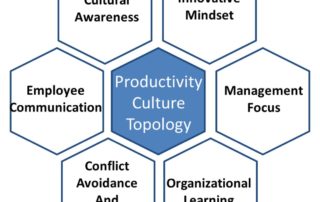Productivity linking and mapping
This post was first published in my “Driving IT Productivity” column on CIO.com and has been updated from its original form. Every department within IT is part of an overall technical ecosystem that is connected to all other departments in some way. For example, Business Analysis provides functional specifications to the programmers. Trainers provide classes which help programmers learn their craft. Database Administrators design database schemas for use by the programmers and oversee the storage and movement of data in cooperation with Enterprise Architects and Production Operations. At a macro level, Data Security protects the computing environment, Data Communications maintains the computing backbone and the Help Desk keep all IT and user devices up and running. If any of these departments fall short in the execution of their responsibilities, then IT and the company it service could fail. As a result of this interrelationship, productivity initiatives in any one department can positively affect other areas of IT and the company overall. This concept is called “Productivity Linking”. Understanding these connections allows you to strategically prioritize your productivity initiatives, based on what is best for IT as a whole. The technique used to document and analyze these connections is called “Productivity Mapping”. The Productivity Mapping process begins by defining your primary goal, which, generally speaking, will loosely fall into three fundamental categories. General Productivity Enhancement Specific Department Productivity Enhancement Specific Process Productivity Enhancement General Productivity Enhancement is the goal of boosting the organization’s overall efficiency. This type of productivity can be attained using [...]









